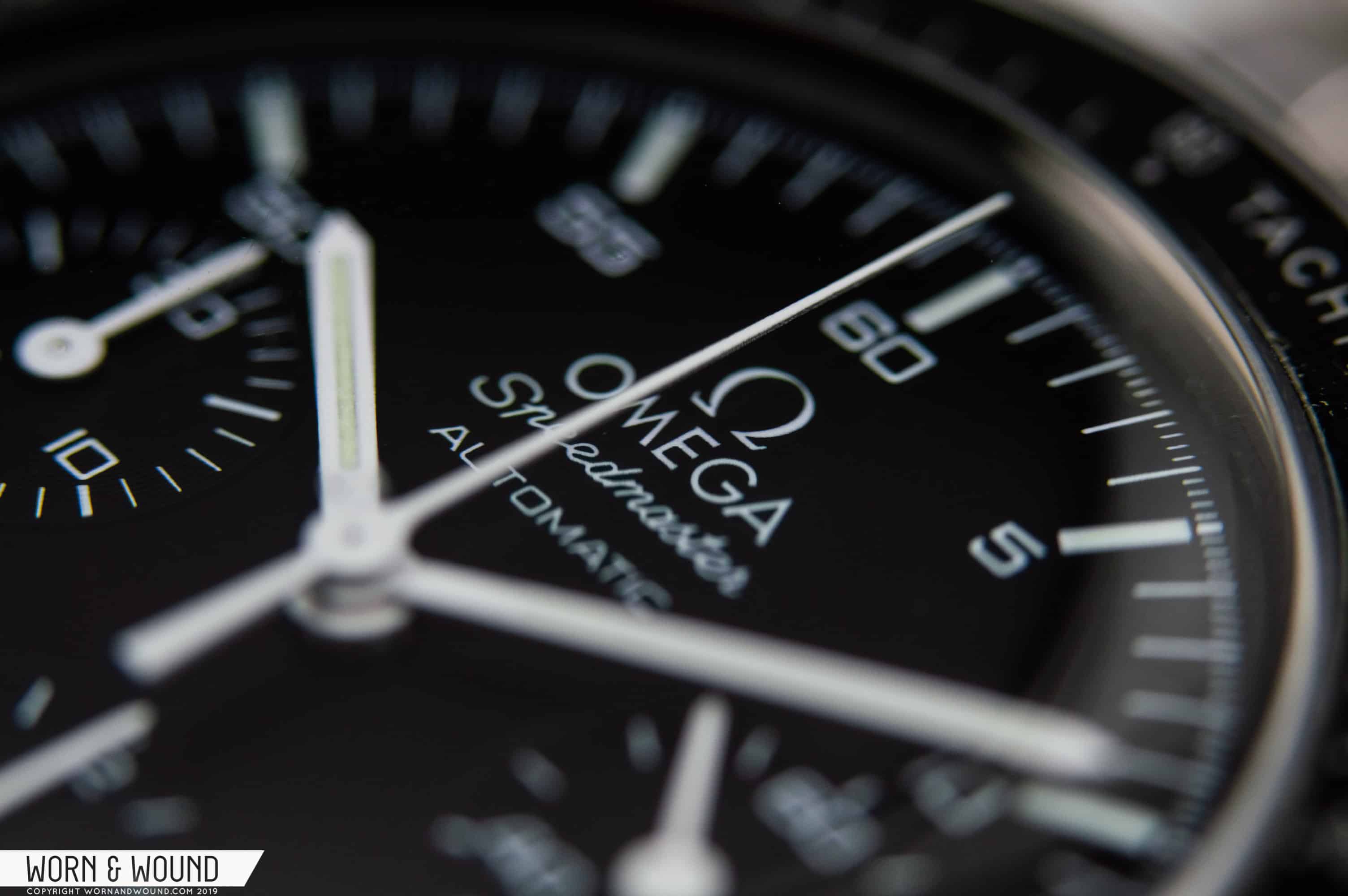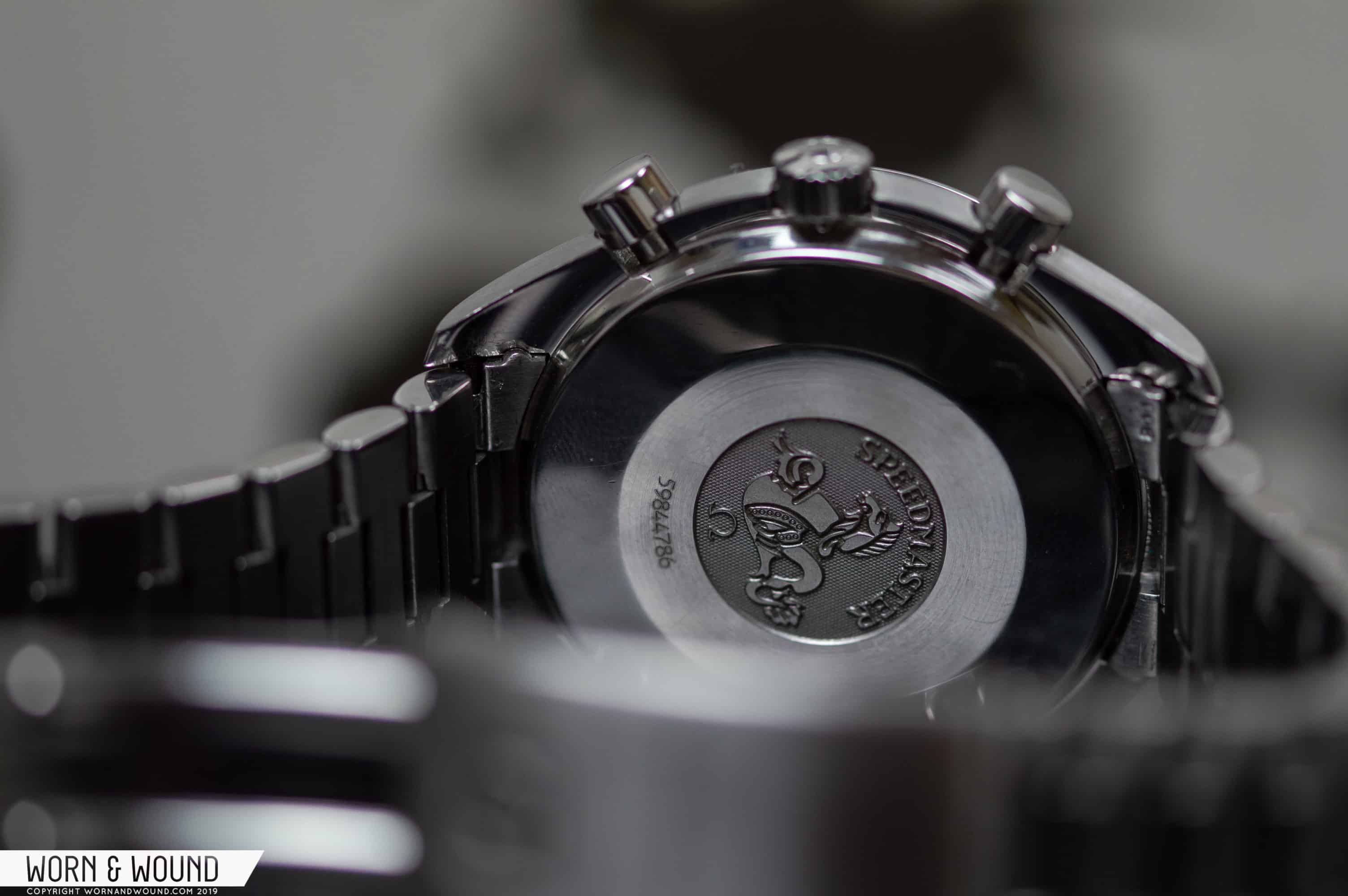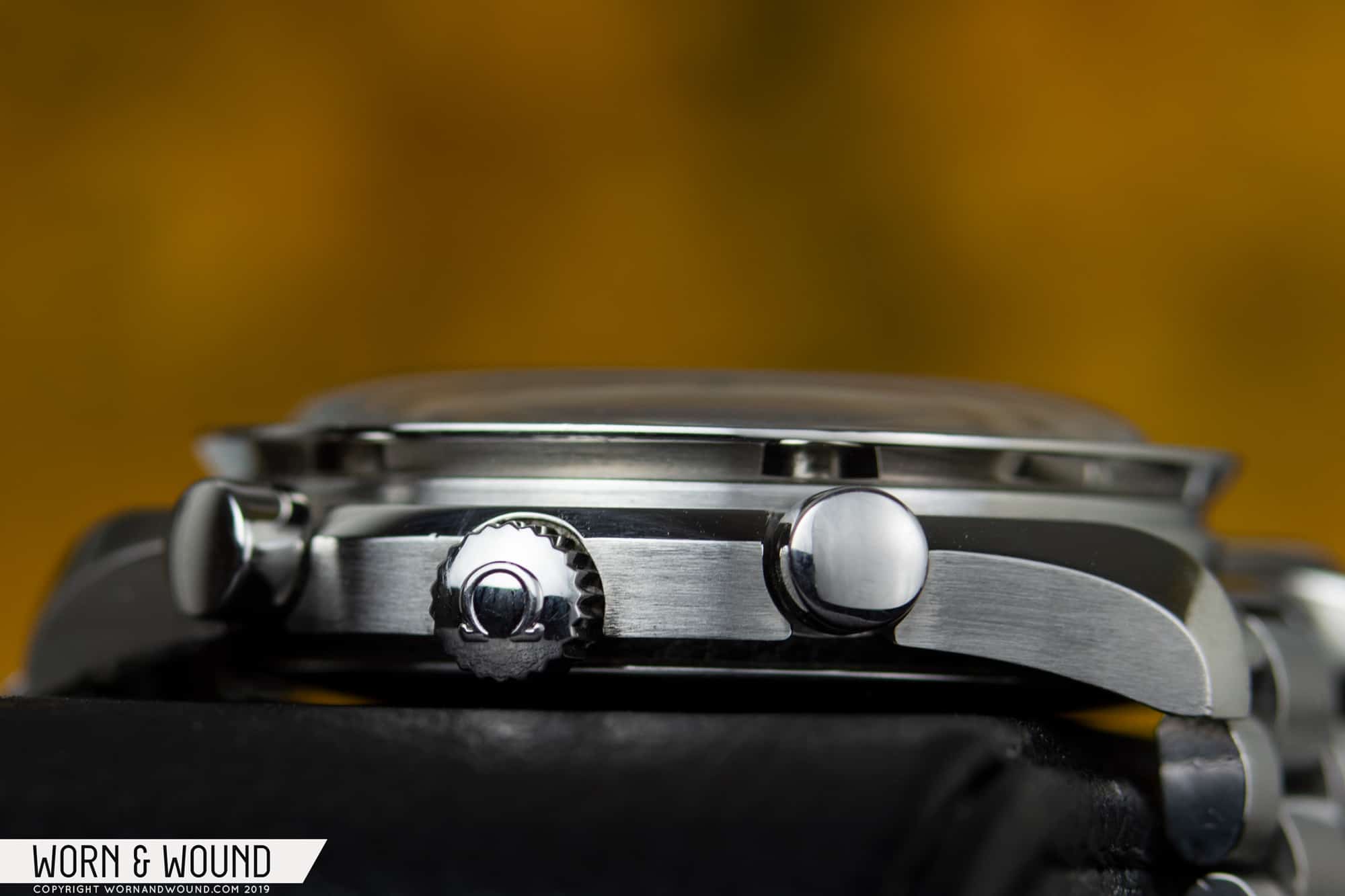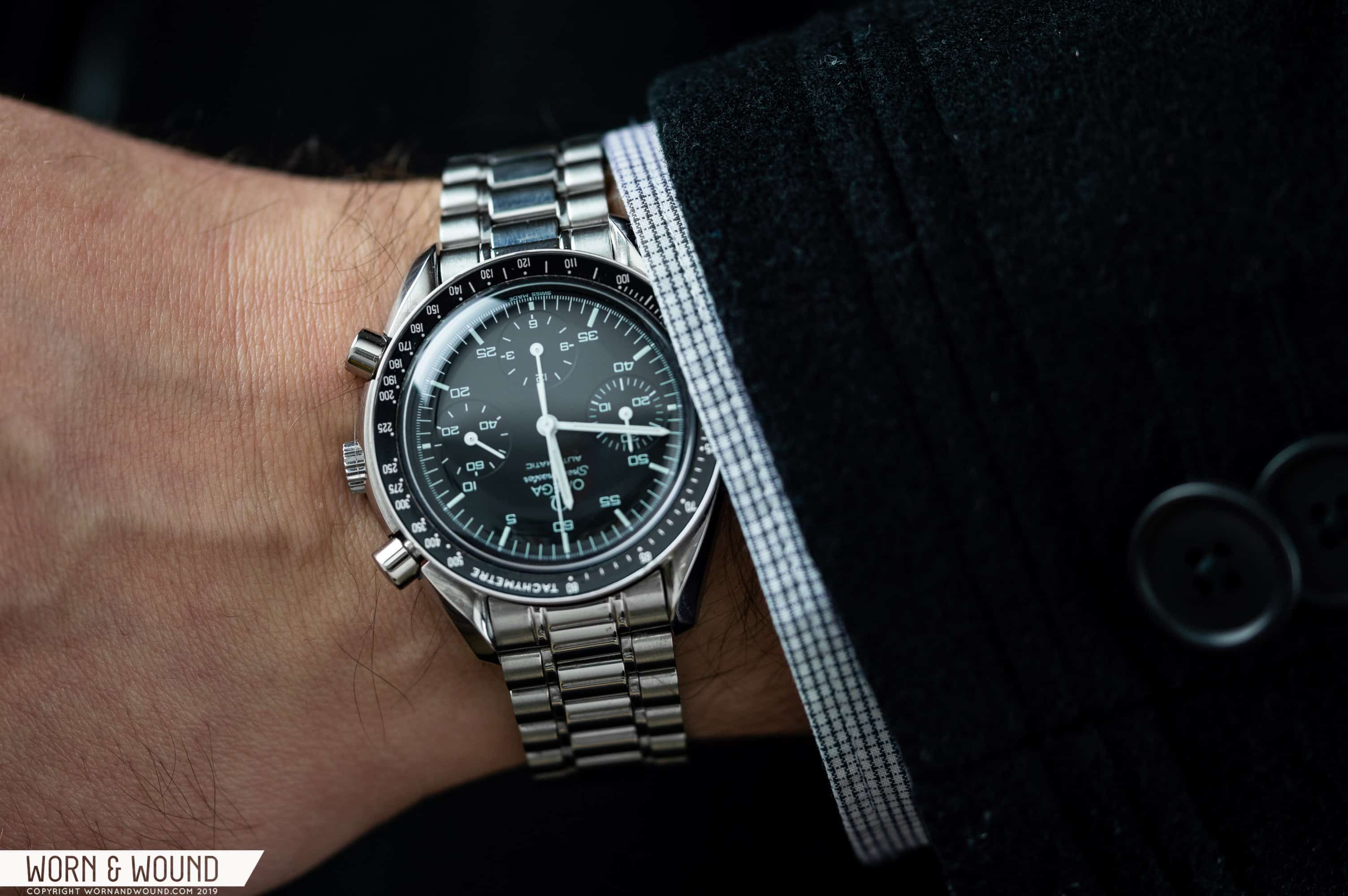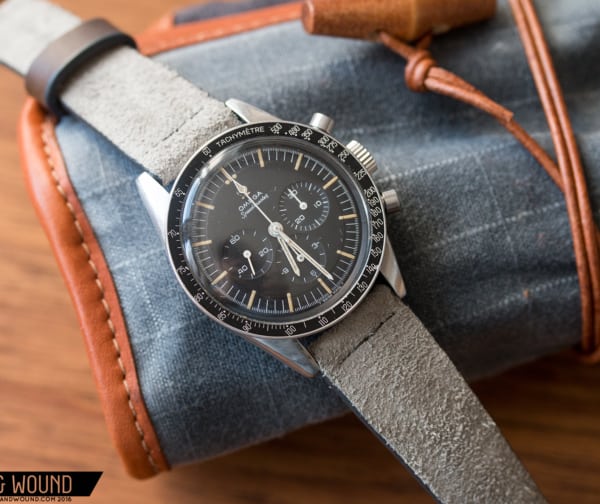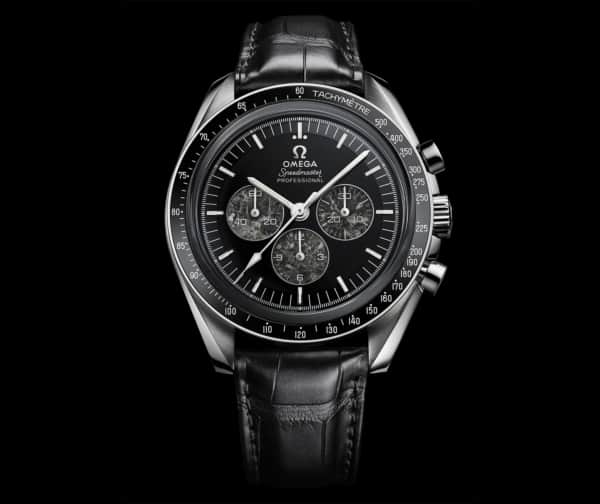Talk about the Omega Speedmaster Automatic (also known as the “Reduced”) and you’ll naturally hear some kind of comparison with the more renowned Speedmaster Professional. Is it fair to only think of a watch in relation to its big brother that went to the moon? That’s such a tough act to follow, and that’s why I think it makes more sense to eradicate all notions of the Professional when taking a proper look at this watch. After all, in isolation, the Speedmaster Automatic has a lot going for it: a small diameter, a clean and striking dial, an automatic chronograph movement — all from one of the industry’s most respected names.
Now out of production for 10 years, is the Omega Speedmaster Automatic ready to come out of the shadows and stand on its own? I’ve owned this particular model for five years, so I have some long-term experience with what it’s like to have the Reduced in the rotation.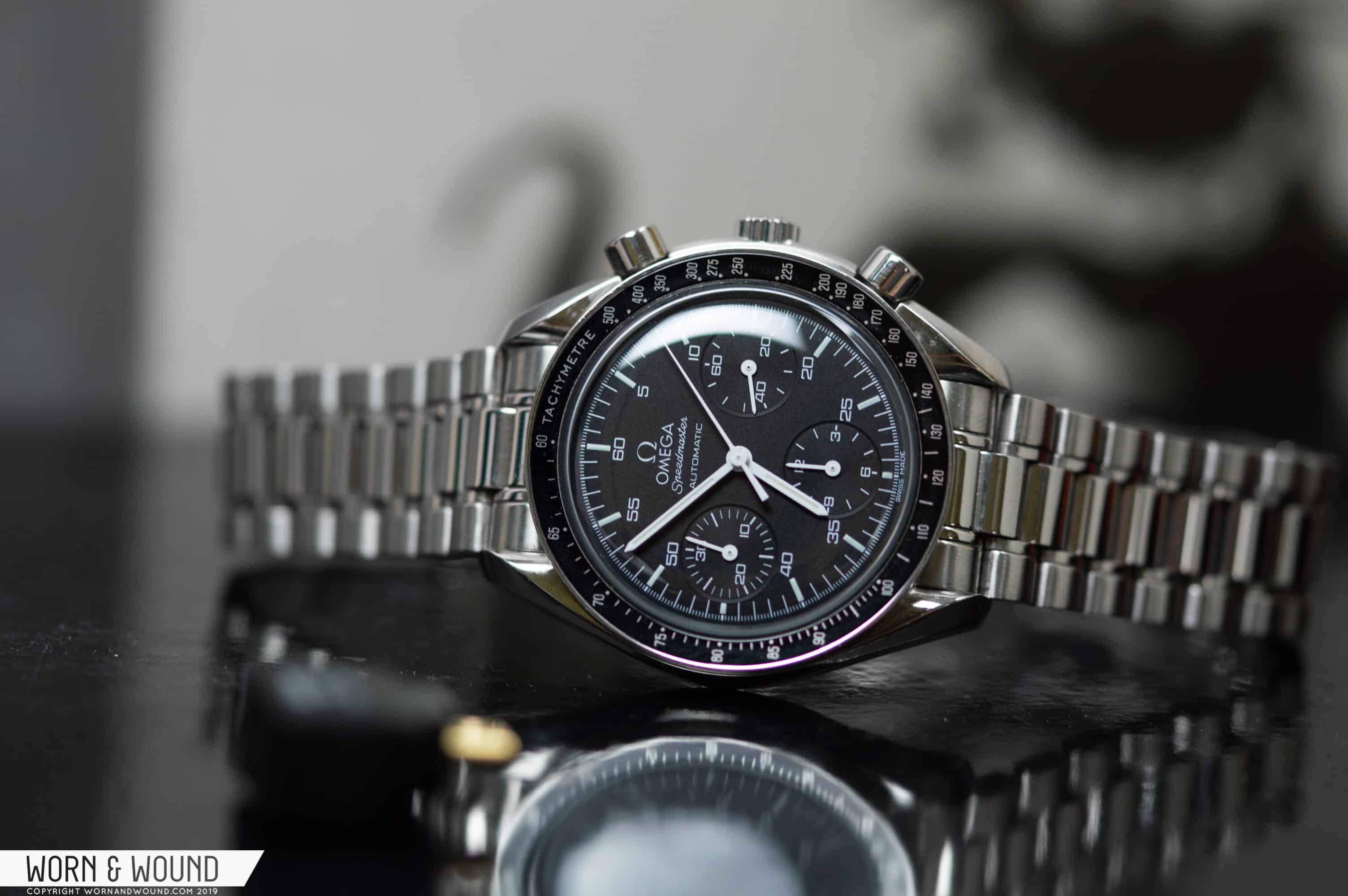
The Omega Speedmaster Automatic Ref. 3510.50 is commonly known as the “Reduced” because of its dimensions. A 38.5mm diameter is slightly on the smaller side of average for a modern watch, and a chronograph at that, though it’s nothing extreme. The lug-to-lug distance comes in at only 45mm, and this is the most significant figure in how the watch wears on the wrist. Additionally, the measurement from the case back to the top of the domed hesalite crystal is just under 12mm, which is impressive for an automatic chronograph. The snap-on case back features Omega’s hippocampus engraving. Water resistance is rated to 30m, which is firmly in the “washing hands” territory.









 Featured Videos
Featured Videos




